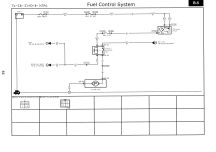Its a real bitch i've just finished refurbing my rx8s and can't show them off cause it stuck outside my skanky nieghbours
Pi##ed off i hate driving the saab
Ideas aprecciated
Dar
Moderators: Doone, westonwarrior
bigdaddycain wrote:How do Dar... Let's start with the basics mate... Are you absolutely,positevely, certain that there is any fuel in? I once trailered my car to the local garage assuming the cambelt had snapped... There was simply no fuel in it as the gauge had stuck on half full (half empty?) It cranked over really quickly like the cambelt had snapped too! But there was no go juice in

Nope has a spark at the plug mike, wants to fire but cuts instantlymikeonb4c wrote:Sorry to hear that Cheffy. I presume there's no spark?
dont know but its worth a puntmissfixit70 wrote:Don't have them on petrol cars usually do they?
what possible oil pressure linkNorthern Bongolow wrote:dont know but its worth a puntmissfixit70 wrote:Don't have them on petrol cars usually do they?im sure they must have something similar on em.
modern petrols usually have a collision shut of to turn the pump of in case of fire /accident.
Electric pump
Electric fuel pump
A piston metering pump f.e. gasoline- or additive metering pumpIn many modern cars the fuel pump is usually electric and located inside the fuel tank. The pump creates positive pressure in the fuel lines, pushing the gasoline to the engine. The higher gasoline pressure raises the boiling point. Placing the pump in the tank puts the component least likely to handle gasoline vapor well (the pump itself) farthest from the engine, submersed in cool liquid. Another benefit to placing the pump inside the tank is that it is less likely to start a fire. Though electrical components (such as a fuel pump) can spark and ignite fuel vapors, liquid fuel will not explode (see explosive limit) and therefore submerging the pump in the tank is one of the safest places to put it. In most cars, the fuel pump delivers a constant flow of gasoline to the engine; fuel not used is returned to the tank. This further reduces the chance of the fuel boiling, since it is never kept close to the hot engine for too long.
The ignition switch does not carry the power to the fuel pump; instead, it activates a relay which will handle the higher current load. It is common for the fuel pump relay to become oxidized and cease functioning; this is much more common than the actual fuel pump failing. Modern engines utilize solid-state control which allows the fuel pressure to be controlled via pulse-width modulation of the pump voltage. This increases the life of the pump, allows a smaller and lighter device to be used, and reduces electrical load.
Cars with electronic fuel injection have an electronic control unit (ECU) and this may be programmed with safety logic that will shut the electric fuel pump off, even if the engine is running. In the event of a collision this will prevent fuel leaking from any ruptured fuel line. Additionally, cars may have an inertia switch (usually located underneath the front passenger seat) that is "tripped" in the event of an impact, or a roll-over valve that will shut off the fuel pump in case the car rolls over.
Some ECUs may also be programmed to shut off the fuel pump if they detect low or zero oil pressure, for instance if the engine has suffered a terminal failure (with the subsequent risk of fire in the engine compartment
interesting bit at the end with poss oil pressure link.,
Northern Bongolow wrote:sorry not trying to scare you,just maybe saying the cause of the fuel pump shuting off the fuel supply could be triggered by the ecu
or an impact switch, these have been around for a few years now,so something to consider.

The Great Pretender wrote:Dar, as you have a spark why not try spraying wd 40 into the intake, if it keeps running while spraying it looks like the fuel system is the problem. Worth a try.